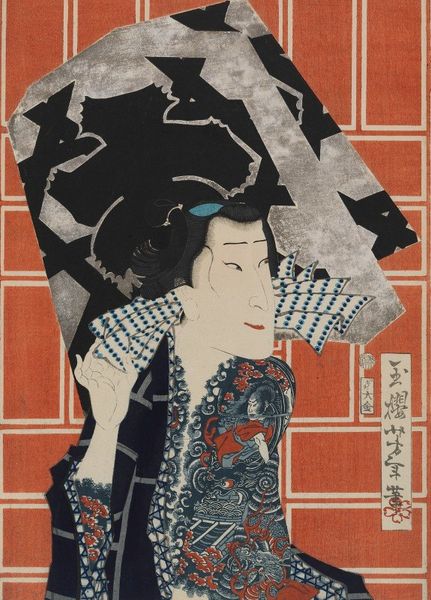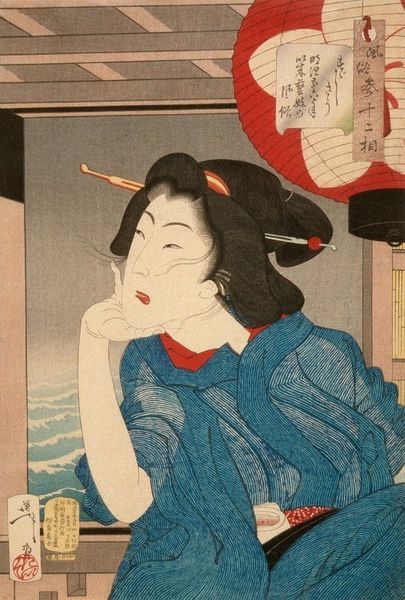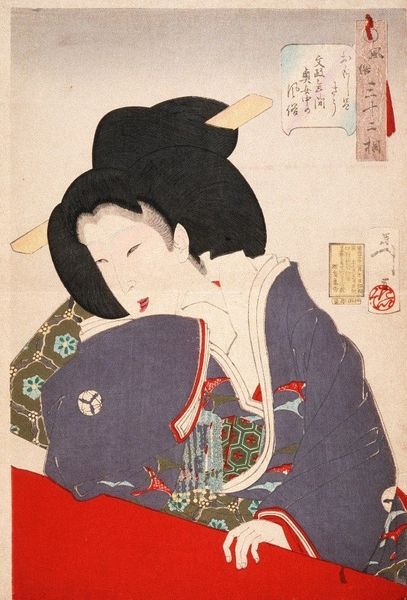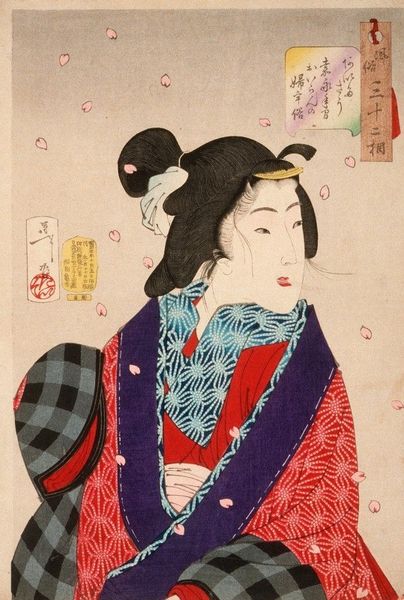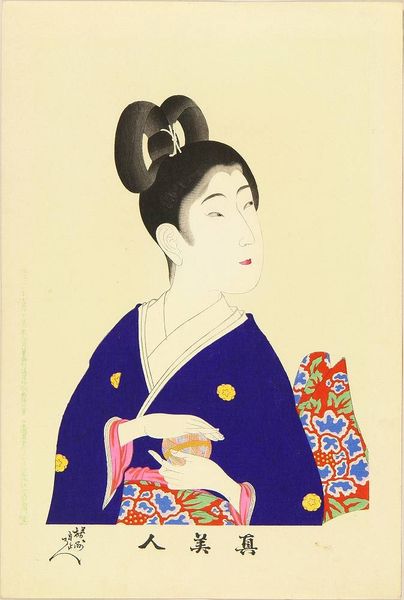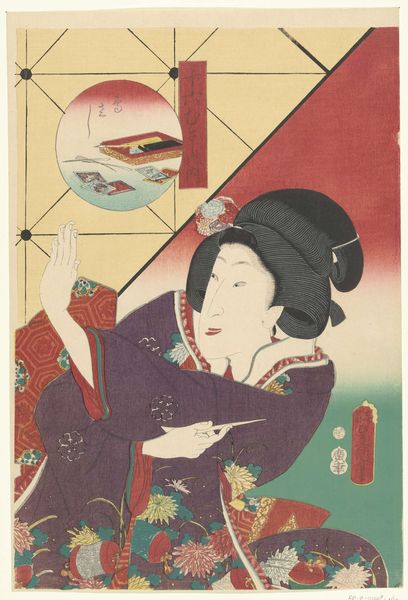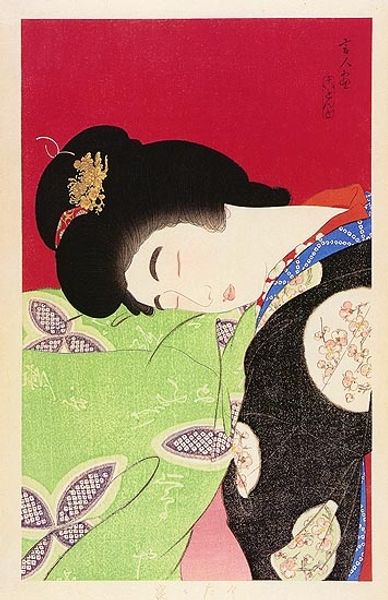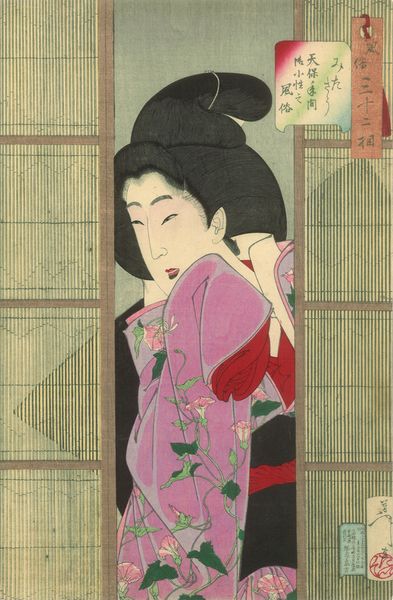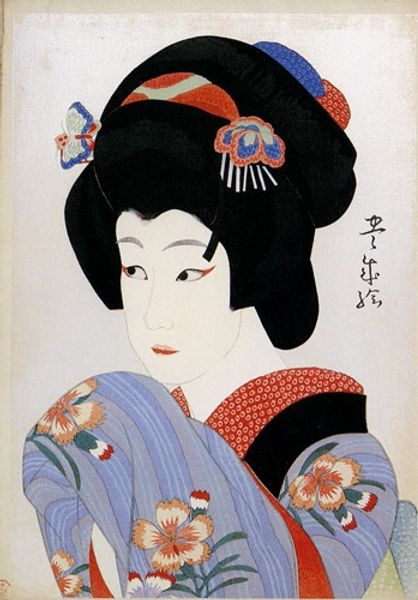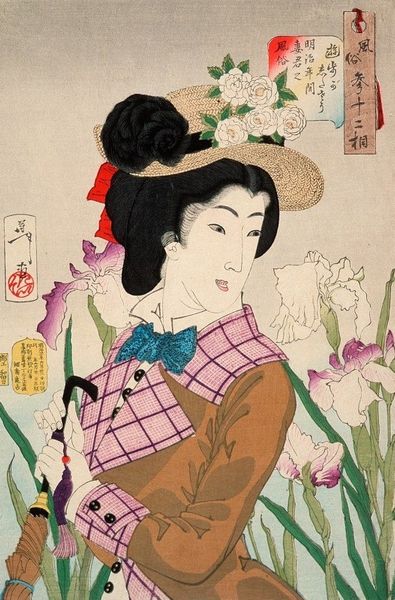
Looking Observant; The Appearance of a Kyoto Waitress of the Meiji Era 1888
0:00
0:00
Copyright: Public Domain: Artvee
Editor: We're looking at "Looking Observant; The Appearance of a Kyoto Waitress of the Meiji Era," a print by Tsukioka Yoshitoshi from 1888. I’m really struck by the contrast between the detailed patterns on the kimono and the lanterns, and the smooth, almost idealized depiction of the woman's face. What do you see in the way he's composed this piece? Curator: Immediately, the formal properties engage the viewer. Consider the strong diagonal created by the woman's gaze and the lanterns; this directs our attention, doesn't it? The artist orchestrates a sophisticated play of light and shadow, notably the stark contrast illuminating her face against the muted backdrop. Editor: Yes, I notice that contrast! But why that specific composition choice? Curator: Precisely! Now consider the color relationships. The judicious use of red, recurring in the maple leaf motifs on the lanterns and subtle details on the woman, establishes visual rhythm. What happens when you remove those red elements in your mind's eye? Do you note how it shifts the structure? The design gives emphasis to her awareness; she observes. This piece prompts considerations about perception itself. Editor: That's a great point. I hadn't considered the deliberate use of those colors, now the woman’s gaze carries more importance. It’s as if her looking holds everything together. Curator: And this tight formal unity reflects back on how structure can imply deeper themes within art. Editor: Thank you. I can better grasp now the nuances the artist chose in their deliberate color and compositional construction.
Comments
No comments
Be the first to comment and join the conversation on the ultimate creative platform.
